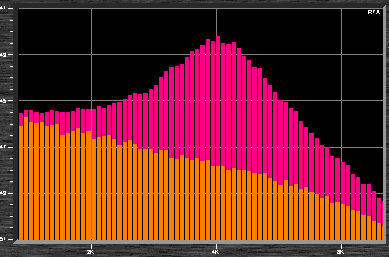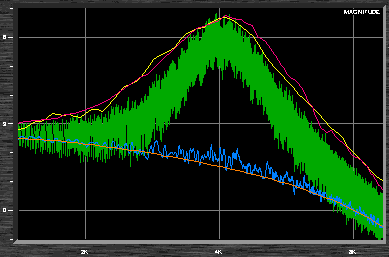Re: Frequency Response/Contour EQ in full range systems.
I would love for the people that are following this to post ACTUAL measurements of systems so we can look at them. NOT RTA screen shots of a system in use. I have posted many times measurements of all sorts of different sizes of installs that I have done. The common thing is flat from 100Hz up-as high as I can get it without straining the drivers. I have many hundreds of customers who are happy with that.
They just mix and use the individual tone controls as needed to get the result they want.
My guess is that the measurements by others will be all over the map. The only general thing they might have in common is that the low freq is louder than the higher freq.
But does that mean that is correct? If you really want to look at a common "item" that is used by most people but is actually WRONG, just look at the polarity switch on consoles. Only a few of them term it correctly-polarity. The rest call it "phase", because that is "common" but is still wrong. And all the "explanation" still does not it correct.
And I will STILL argue that the SHAPE is due more to the eq and instrument levels-RATHER than the actual eq/response of the PA. And on the top end-if the FOH guy likes lots of cymbals, then the "shape" of the actual output will be higher than if he doesn't turn up the cymbals as much. And yet the "shape" of the PA has stayed the same.
When you put a low freq boost on the kick drum, that is a channel EQ, NOT the system eq. But is reflected in the "shape" of the sound we hear.
Just because the sound we hear is generally bass heavy-does not mean that the "system" is bass heavy-just the mix.
The amount of this applied eq depends on the actual response of the system. Some systems need more bump than others. So therfore they are not all the same.
I really don't know how to explain it any better than that.
Of course others have different opinions on how to do it, but I get good results (and happy customers) with my way-so I will stick with that.
Feel free to do it whatever way gets you business.
I assume you have actual measurements to back up your claim? I have seen very few (as in only a couple) measurements of a system that is "in place" and ready for the show.Ivan,
Concert PA systems almost always have a curve similar to the l'acoustics curve. This is not new information. It is a reality. I attribute this to "shape" of popular music. You disagree. What is your explanation?
I would love for the people that are following this to post ACTUAL measurements of systems so we can look at them. NOT RTA screen shots of a system in use. I have posted many times measurements of all sorts of different sizes of installs that I have done. The common thing is flat from 100Hz up-as high as I can get it without straining the drivers. I have many hundreds of customers who are happy with that.
They just mix and use the individual tone controls as needed to get the result they want.
My guess is that the measurements by others will be all over the map. The only general thing they might have in common is that the low freq is louder than the higher freq.
But does that mean that is correct? If you really want to look at a common "item" that is used by most people but is actually WRONG, just look at the polarity switch on consoles. Only a few of them term it correctly-polarity. The rest call it "phase", because that is "common" but is still wrong. And all the "explanation" still does not it correct.
And I will STILL argue that the SHAPE is due more to the eq and instrument levels-RATHER than the actual eq/response of the PA. And on the top end-if the FOH guy likes lots of cymbals, then the "shape" of the actual output will be higher than if he doesn't turn up the cymbals as much. And yet the "shape" of the PA has stayed the same.
When you put a low freq boost on the kick drum, that is a channel EQ, NOT the system eq. But is reflected in the "shape" of the sound we hear.
Just because the sound we hear is generally bass heavy-does not mean that the "system" is bass heavy-just the mix.
The amount of this applied eq depends on the actual response of the system. Some systems need more bump than others. So therfore they are not all the same.
I really don't know how to explain it any better than that.
Of course others have different opinions on how to do it, but I get good results (and happy customers) with my way-so I will stick with that.
Feel free to do it whatever way gets you business.



